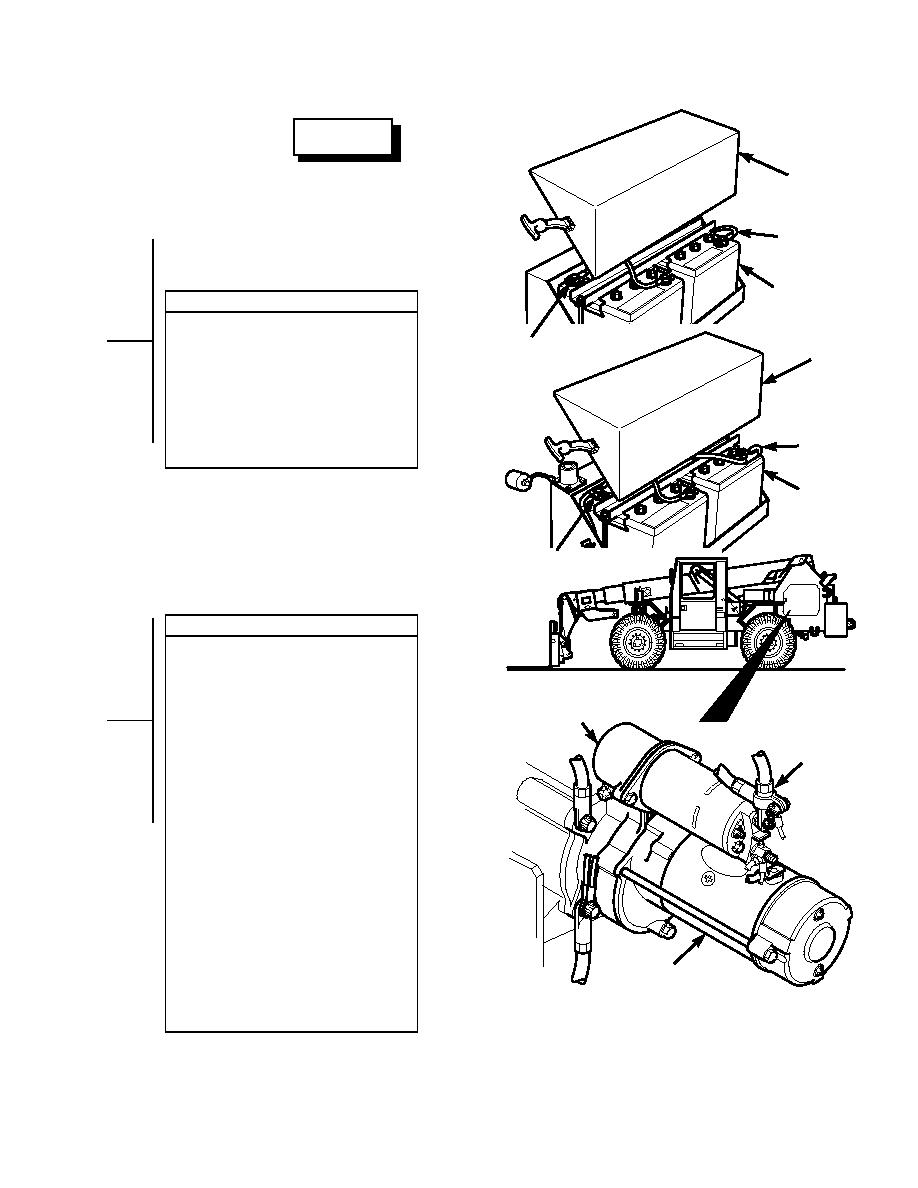 |
|||
|
|
|||
|
Page Title:
STARTER DOES NOT TURN ENGINE, TURNS ENGINE SLOWLY - continued |
|
||
| ||||||||||
|
|
 TM 10-3930-673-20-1
WARNING
COVER
Remove rings, bracelets, watches, necklaces, and any other
jewelry before working around vehicle. Jewelry can catch on
equipment and cause injury or short across electrical circuit
NEGATIVE
B
and cause severe burns or electrical shock.
ACTERY
T
Battery acid is harmful to skin and eyes. Always wear eye
ABLE
protection when working with batteries.
BATTERY
BATTERY VOLTAGE WITH STE/ICE
Use STE/ICE Test #67 to test voltage of
battery. Or, connect multimeter to positive
POSITIVE LEAD
COVER
battery cable and known good ground to test
voltage. Battery voltage should be 24 volts or
higher.
(a) If voltage is 24 volts or higher, go
NEGATIVE
B
to Step 3 of this fault.
ACTERY
T
(b) If voltage is below 24 volts, service
ABLE
or replace battery as necessary
(Para 8-42). Restart vehicle.
BATTERY
POSITIVE LEAD
STE/ICE TESTS ON STARTING SYSTEM
(1) Perform STE/ICE Test #68. Starter
motor voltage should test between 18
and 27.5 volts. If voltage is not within
STARTER
range, replace positive cable
(Para 8-42).
OLENOID
BOSITIVE
P
(2) Perform STE/ICE Test #69. Negative
cable voltage drop should test between
ACTERY
T
0 and 3 volts. If voltage drop is greater,
ABLE
replace negative cable (Para 8-42).
(3) Perform STE/ICE Test #70. Solenoid
voltage should test between 18 and
27.5 volts. If voltage is less, replace
solenoid (Para 8-3).
(4) Perform STE/ICE Test #89. Solenoid
voltage drop should test less than
0.3 volts. If voltage drop is greater,
replace solenoid (Para 8-3).
(5) Perform STE/ICE Test #71. Starter
current average should test between 0
and 250 amps. If current is greater,
replace starter (Para 8-3).
(6) Perform STE/ICE Test #72. Starter
STARTER MOTOR
current first peak should test between
300 and 1000 amps. If peak is not
TR01447
within range, service or replace battery
(Para 8-42).
2-617
|
|
Privacy Statement - Press Release - Copyright Information. - Contact Us |